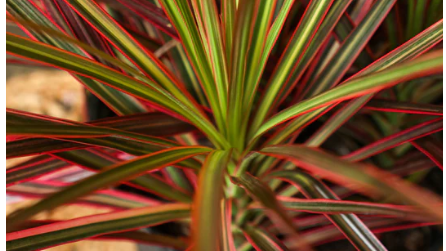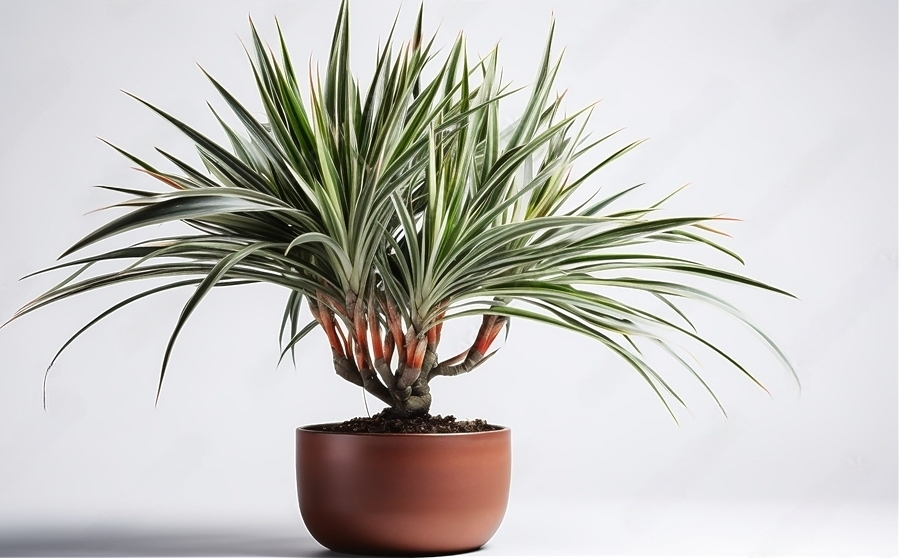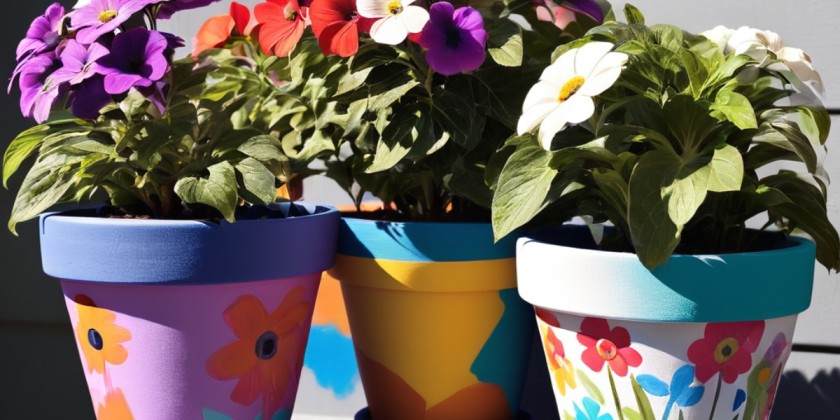Dracaena marginata, the dragon tree, is a visually striking plant featuring long, green, sword-like leaves with unusual red edges. This Madagascar native has become an excellent choice for novice gardeners thanks to its low-keeping conditions, drought opposition, and incredible resilience. Its slow expansion rate allows it to be created year-round, though it infrequently has small white flowers, especially outdoors during the spring.
The dragon tree can grow up to 20 feet in warm outdoor conditions. However, it is generally produced as a potted houseplant and carried at a more effortless height of 6 feet or less. One crucial regard is to keep this plant out of reach of pets, as it is poisonous to animals when ingested. Its remarkable appearance, durability, and care relief make the dragon tree a favoured choice for improving indoor and outdoor spaces with a whiff of unknown beauty.
Dragon plants can remarkably succeed in limited spaces due to their slenderness. Their stems are gracefully slender as they ascend, escorted by an array of long, slim, deep-green leaves. As evergreen tropical shrubs, their ribbon-like foliage can grow to about 40cm long and display a reddish hue along the leaf margins. Their incremental growth strategy permits them to delicately expand, imparting a hint of the outdoors to even the most determined indoor conditions.
These plants are notably slow in their growth rate. To make a discernible effect, begin with a larger, more selected specimen. To put this in perspective, my Dracaena marginata has only grown roughly 30cm over three years.
Types of Dragon Tree
- Dracaena marginata Tricolor: This type boasts exceptional features with dark red margins decorating its green leaves. A characteristic feature is the existence of an ivory stripe running along the centre of each leaf. Incorporating these colours makes a visually attractive contrast, making it a sought-after indoor decoration choice.

- D. marginata Colorama: may seem primarily pink, but it is, in fact, diversified with white and green stripes. This unique build makes it a gorgeous addition to any space. However, preserving its unique and vibrant colours requires ample and bright light.

- D. marginata Bicolor: Loyal to its name, the ‘Bicolor’ assortment of the dragon tree features leaves trimmed with red and green stripes. This fantastic contrast in colouration adds a vibrant and eye-catching component to its overall appearance, making it a favoured choice for those seeking to add a touch of energy to their indoor plant exhibition.

Also read:10 Types of Palm Plants to Grow Indoors
Propagating Dragon tree
Dracaena propagation is a precise process primarily achieved via tip cuttings. This can be done year-round, but the most elevated success paces are commonly celebrated in spring and summer with abundant light and warmth. Select a stem tip from a Dracaena plant with multiple branches to begin the propagation method, confirming it’s roughly 8cm long and found just above a node. Prune away about one-third of the lower leaves, then place the cutting in a jar of water on a sunny windowsill. Regularly replace the water, and in a few weeks, you’ll witness the development of roots. Once the roots are shown, transplant the cutting into well-draining soil in a pot that comfortably houses the newly formed roots. It’s worth mentioning that taking a cutting often encourages the parent plant to make a new shoot at the location from which the cutting was taken.
Dragon Tree Care
Dragon trees thrive in bright light conditions but can tolerate partial shade. They require a loose, well-draining potting mix, ideally earthy soil with peat moss, and a receptacle with adequate space to acclimate to the plant’s extensive root system. Avoid direct sunlight as it can cause leaf burn. Watering dragon trees is crucial, with overwatering being a common issue. Wait until the top half of the soil is waterless before watering, which can take up to three weeks. Watering with filtered or non-fluoridated water is recommended to prevent fluoride-related issues.
Dragon trees prefer a warmer environment with temperatures between 70 and 80 degrees Fahrenheit. Normal household humidity levels are suitable, but occasional spray misting can be helpful for arid indoor needs. Fertilization is not a high priority for dragon trees due to their modest nutrient conditions. However, a light application of level controlled-release liquid fertilizer in spring can stimulate growth. Repotting dragon trees every two to three years is common, but it’s advisable to refresh the potting soil perennially to maintain healthy growth and energy.
Also Read: 10 Types of Palm Plants to Grow Indoors
FAQ’s
- What is a dragon tree, and where is it found?
Scientifically known as Dracaena marginata, the Dragon tree is a decorative plant in Madagascar and other Indian Ocean islands. It’s frequently cultivated as a houseplant or ornamental tree in more hospitable climates.
- What are the light conditions for dragon trees?
Dragon trees flourish in bright, indirect light. They can endure partisan shade, but lower light requirements may result in slower growth and less vivid leaf colours.
- What is the suggested soil type for potted dragon trees?
Use a lax, well-draining potting mix, ideally a loamy soil amended with peat moss, to encourage healthy root maturation.
- How frequently should I repot my dragon tree?
Dragon trees have gradual growth rates and typically require repotting every two to three years. Revive the potting soil perennial to control compaction.
- Is fertilization essential for dragon trees?
Dragon trees have low nutrient necessities. A light application of proportional controlled-release liquid fertilizer in premature spring can stimulate growth but avoid fertilizing in winter.
- Are dragon trees safe for pets?
No, dragon trees are poisonous to animals if consumed. Assure that they are held out of reach of pets.











